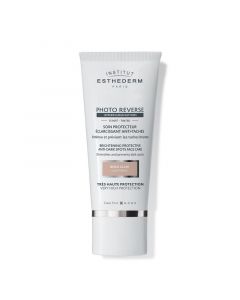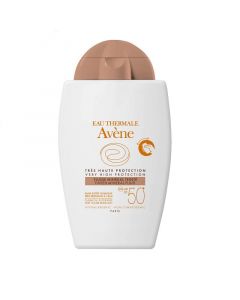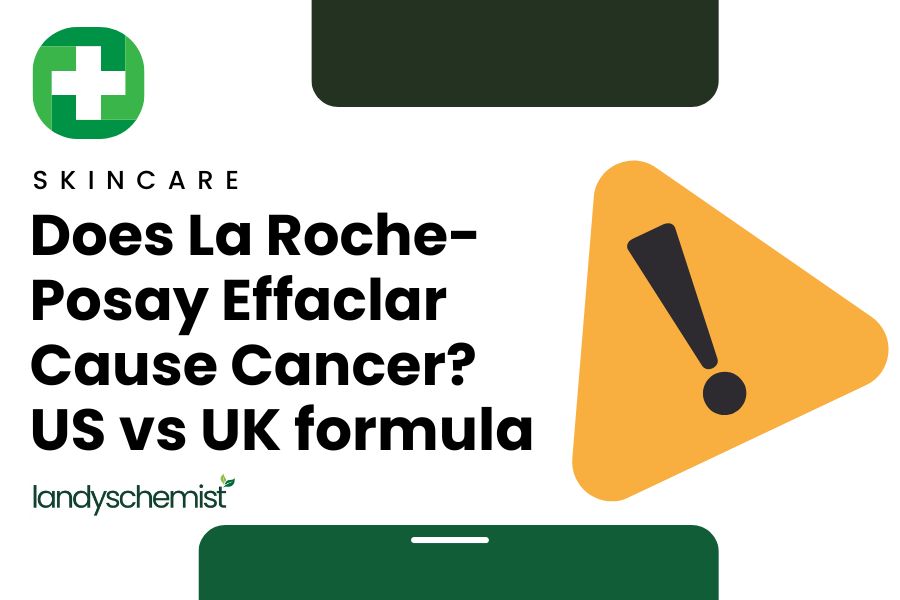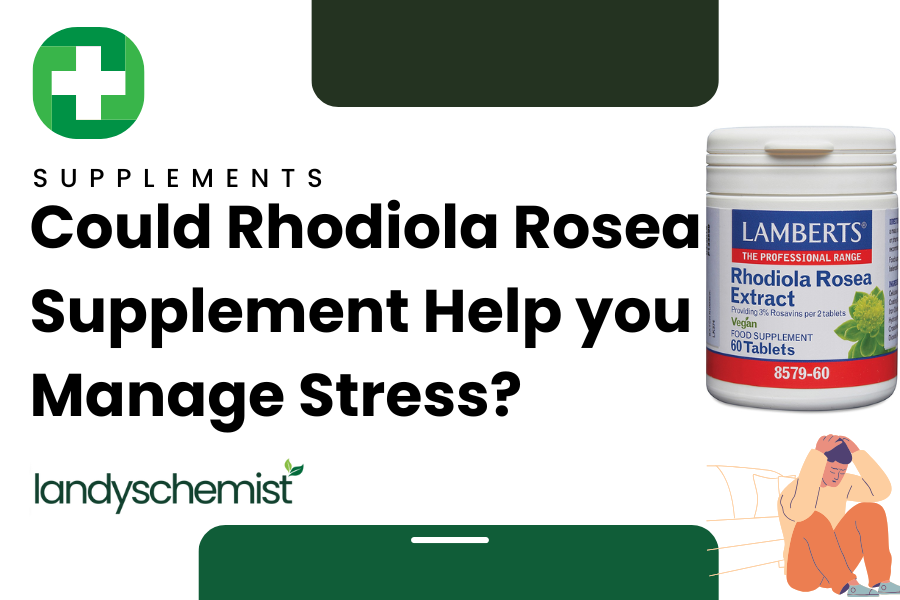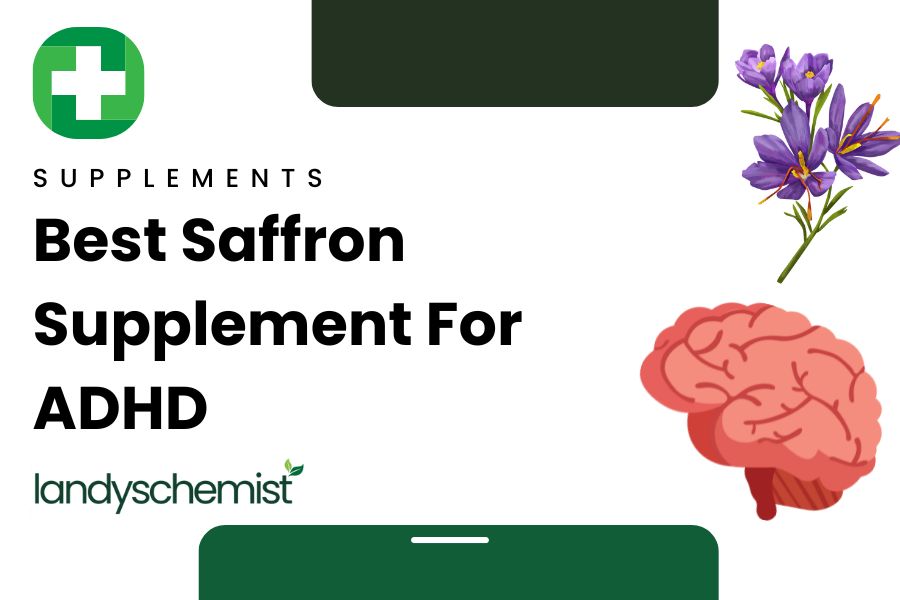
The Ultimate Guide to Tinted Sunscreen: Benefits, Types & How to Choose
Tinted sunscreen has become a skincare essential, providing broad-spectrum UV protection while offering light coverage and skincare benefits. Unlike traditional sunscreens, which can leave a white cast, tinted sunscreens blend more naturally into all skin tones, making them more cosmetically elegant.
Beyond just UV protection, tinted sunscreens containing iron oxides help defend against visible light and blue light, both of which can contribute to pigmentation issues like melasma and sunspots. Given the growing awareness of blue light exposure from screens, many dermatologists now recommend tinted sunscreen as a multi-functional solution for everyday skin defence.
In this guide, we will cover what tinted sunscreen is, its key benefits, how it compares to foundation with SPF, the different types available, and how to choose the best one for your skin type.
What is Tinted Sunscreen?
Tinted sunscreen is a hybrid between traditional sunscreen and sheer complexion-enhancing pigment. It contains UV filters—either mineral, chemical, or a combination of both—but differs from regular sunscreen by including iron oxides, which provide a tint and added protection against visible light.
While standard sunscreens protect mainly against UVA and UVB rays, tinted sunscreens offer:
- Protection against visible light, which is important for reducing pigmentation.
- Better cosmetic application, blending well with all skin tones.
- A foundation-like effect, reducing the need for additional makeup.
These qualities make tinted sunscreen a superior choice for those who want multi-functional sun protection while achieving a more even skin tone.
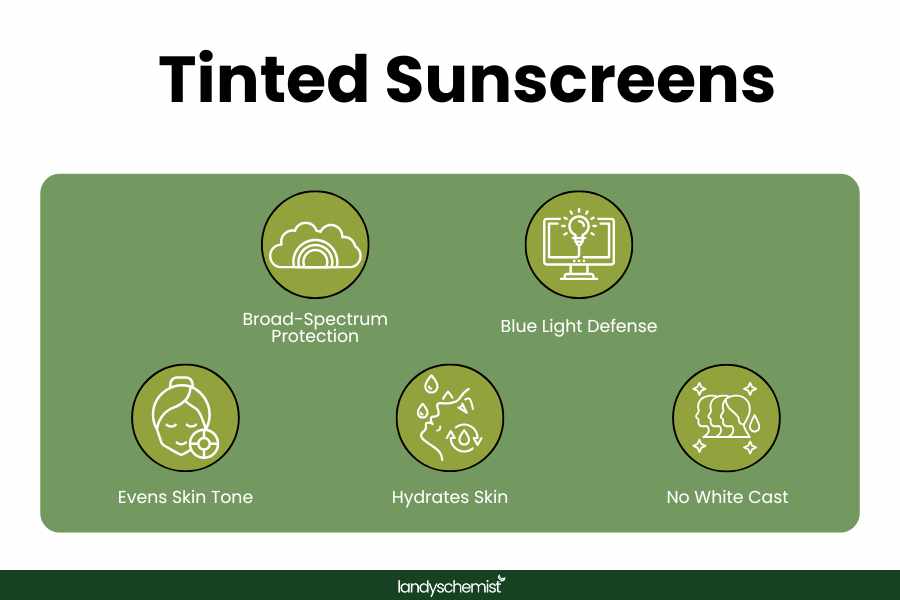
Key Benefits of Tinted Sunscreens
Broad-Spectrum Protection Against UVA & UVB Rays
Tinted sunscreens offer broad-spectrum protection, which means they shield against both UVA (aging) and UVB (burning) rays. Exposure to UV radiation is one of the leading causes of premature aging, hyperpigmentation, and skin cancer, making daily sunscreen use non-negotiable.
Studies confirm that mineral-based tinted sunscreens provide high-efficiency protection against these harmful rays, making them a preferred choice for those with sensitive or reactive skin.
Protection Against Blue Light from Screens
Emerging research shows that blue light (HEV light) from smartphones, computers, and indoor lighting can contribute to skin aging and pigmentation. Unlike traditional sunscreens, tinted sunscreens with iron oxides have been shown to reduce blue light-induced oxidative stress, particularly in individuals with darker skin tones prone to hyperpigmentation.
Natural-Looking Coverage Without Heavy Makeup
One of the biggest appeals of tinted sunscreen is its ability to double as a light foundation. The pigment in the sunscreen provides a sheer, natural finish, allowing users to achieve a more even skin tone without needing heavy makeup.
This is particularly beneficial for acne-prone and sensitive skin types, as traditional foundations may clog pores and cause breakouts, while tinted sunscreens are often non-comedogenic.
Skincare Benefits from Added Ingredients
Many tinted sunscreens go beyond sun protection and contain skincare-friendly ingredients such as:
- Hyaluronic Acid for hydration
- Niacinamide to soothe redness and even skin tone
- Antioxidants (Vitamin C & E) to fight free radicals and sun damage
These added benefits make tinted sunscreen a multitasking product, simplifying skincare routines while delivering visible results.
No White Cast – Suitable for All Skin Tones
A common complaint with traditional sunscreens is their white cast, especially for people with darker skin tones. Tinted sunscreens use pigmented iron oxides, which help blend into different skin tones seamlessly while improving the cosmetic acceptability of sunscreen.
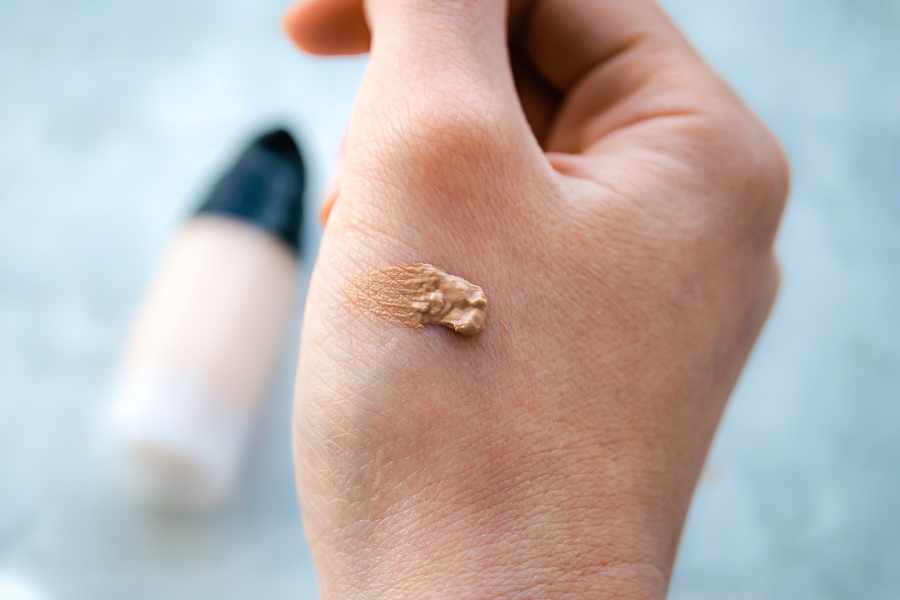
Types of Tinted Sunscreens: Which One is Right for You?
Not all tinted sunscreens are created equal. They come in two main types—mineral and chemical formulations—each offering unique benefits depending on skin type, sensitivity, and lifestyle needs. Choosing the right one can make a significant difference in both UV protection and how the sunscreen feels on your skin.
Mineral Tinted Sunscreen
Mineral tinted sunscreens—also called physical sunscreens—contain zinc oxide and/or titanium dioxide, which form a protective layer on the skin’s surface to reflect UV radiation. Unlike chemical sunscreens, they do not absorb into the skin, reducing the likelihood of irritation.
One of the biggest advantages of mineral sunscreens is their ability to protect against visible light, thanks to the iron oxides in tinted formulations. This makes them particularly beneficial for individuals prone to hyperpigmentation, melasma, or darker skin tones, as visible light contributes to skin discoloration.
While mineral sunscreens provide excellent UV and visible light protection, some formulations can feel thicker or heavier on the skin. However, tinted versions help counteract this issue by blending seamlessly, making them a more cosmetically elegant option.
Chemical Tinted Sunscreen
Chemical tinted sunscreens work differently—instead of reflecting UV rays, they absorb them and convert them into heat, which is then released from the skin. This allows for a lighter texture, making them comfortable for daily wear without leaving a noticeable residue.
Their quick-absorbing nature makes chemical tinted sunscreens a great option for those who prefer a weightless finish. They blend effortlessly into all skin tones without leaving a white cast, which is particularly appealing for deeper skin tones.
However, chemical formulations do not protect against visible light, meaning those concerned with hyperpigmentation or melasma may be better off with a tinted mineral sunscreen. Additionally, some individuals with sensitive or reactive skin may find certain chemical filters irritating.
Live Tinted Sunscreen: A Trending Option?
A new wave of inclusive tinted sunscreens has emerged, with brands like Live Tinted leading the way in offering shade diversity. Unlike traditional “universal tint” sunscreens, which often fail to match deeper skin tones, Live Tinted provides a broader shade range to ensure a better skin tone match.
What makes Live Tinted Sunscreen unique is its emphasis on protecting against both UV and visible light, due to its iron oxide-infused formula. This makes it especially useful for individuals with hyperpigmentation.
For those struggling to find a tinted sunscreen that blends seamlessly, Live Tinted is a worthy alternative. However, if UV protection is your top priority, dermatologist-recommended tinted sunscreens may still be the better choice.
How to Choose the Right Tinted Sunscreen
Choosing a tinted sunscreen isn’t just about SPF level—it also depends on shade match, finish, and additional skincare benefits. The best choice for you will depend on your lifestyle needs, how much sun exposure you get, and how often you can reapply throughout the day.
Skin Type Considerations
Different skin types require different sunscreen formulations to ensure optimal comfort, protection, and effectiveness. Here’s what to look for based on your skin type:
Tinted Sunscreen for Oily & Acne-Prone Skin
For oily or acne-prone skin, the right sunscreen should control shine and excess sebum while remaining lightweight and breathable. A heavy or greasy formula can clog pores, leading to breakouts.
What to Look For:
- Oil-free and non-comedogenic formulas that won’t clog pores
- Mattifying ingredients like silica or clay to reduce shine
- Fast-absorbing textures to prevent an oily residue
Key Ingredients: Niacinamide (reduces oil production), zinc oxide (absorbs excess sebum), and green tea extract (calms inflammation).
Avoid: Heavy creams, thick balms, or sunscreens with added oils, as they can leave skin feeling greasy and contribute to breakouts.
Tinted Sunscreen for Dry & Mature Skin
If your skin tends to feel tight, flaky, or dehydrated, a hydrating sunscreen with moisturising properties is essential.
What to Look For:
- Creamy, dewy formulas that provide hydration
- SPF 30 or higher to protect against UV-induced aging
- Antioxidant-rich formulas to combat free radical damage
Key Ingredients: Hyaluronic acid (locks in moisture), squalane (mimics skin’s natural lipids), and peptides (boosts collagen for firmer skin).
Avoid: Alcohol-based sunscreens that dry out the skin further.
Tinted Sunscreen for Sensitive Skin
For those with rosacea, eczema, or skin prone to irritation, choosing a gentle, mineral-based sunscreen is the best option. Chemical sunscreens can sometimes cause redness, itching, or stinging, making mineral formulas the safer choice.
What to Look For:
- 100% mineral filters (zinc oxide & titanium dioxide) for non-irritating protection
- Fragrance-free & hypoallergenic formulas
- SPF 50 for maximum skin barrier protection
Key Ingredients: Centella asiatica (calms irritation), ceramides (strengthens the skin barrier), and colloidal oatmeal (soothes inflammation).
Avoid: Chemical UV filters like oxybenzone or avobenzone, which may trigger skin sensitivity.
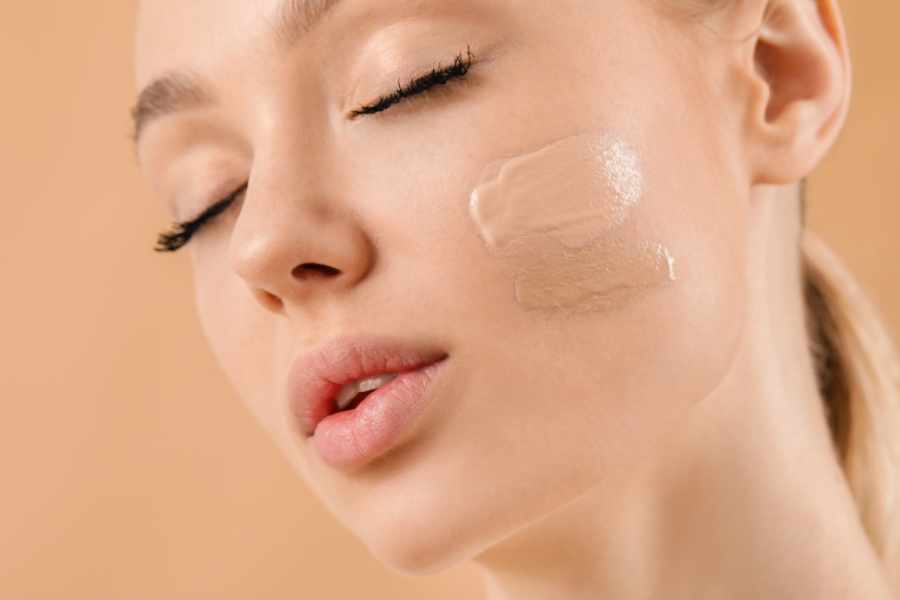
Shade Selection: Finding the Right Tint
Tinted sunscreens typically offer a limited number of shades, so finding the perfect match can be challenging.
What to Consider:
- Choose brands that offer multiple shade options rather than a single universal tint
- Pay attention to undertones—warm, cool, or neutral—to ensure a natural look
- Test the tint in natural light to see how it blends with your skin
Pro Tip: If a sunscreen appears too light, mix it with a bronzer or a bit of your foundation to create a more natural match.
SPF Level: How Much Protection Do You Need?
While all tinted sunscreens offer some level of sun protection, choosing the right SPF is crucial for proper defence against sun damage.
SPF 30 → Suitable for daily indoor wear with minimal sun exposure
SPF 50 → Recommended for outdoor activities, commuting, and hyperpigmentation concerns
Pro Tip: Even on cloudy days, up to 80% of UV rays penetrate the skin, so daily SPF use is essential, no matter the weather.
Longevity & Reapplication: Does It Last All Day?
Reapplying sunscreen throughout the day is just as important as the initial application. Some tinted sunscreens last longer than others, depending on their water resistance and formulation.
- For everyday wear → Choose a long-wearing, transfer-resistant formula
- For outdoor activities → Use a water-resistant sunscreen (40-80 minutes protection)
Pro Tip: Reapply sunscreen every two hours, especially if you are outdoors or sweating. Using a tinted SPF compact or mist can make mid-day touch-ups easier.
Tinted Sunscreen vs. Foundation with SPF
While some foundations contain SPF, they are not designed for full sun protection. Most people apply foundation in thin layers, which provides far less SPF than advertised. Tinted sunscreens, on the other hand, offer full SPF protection, can be reapplied throughout the day, and often contain iron oxides to protect against visible light—something most foundations lack.
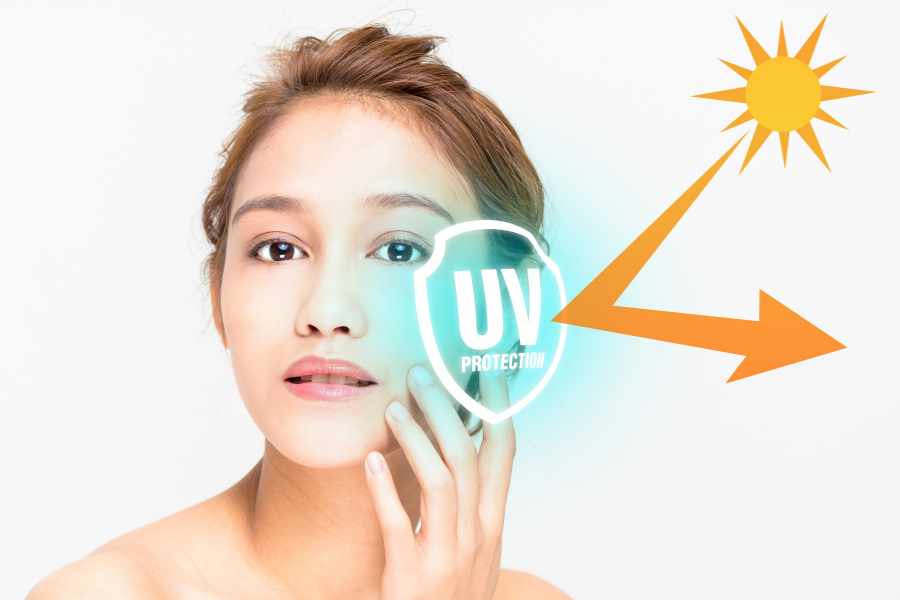
How to Apply Tinted Sunscreen for Maximum Protection
Applying tinted sunscreen correctly is crucial to ensure you get the full SPF protection and keep your skin safe from UV damage. Many people unknowingly use too little sunscreen or apply it incorrectly, leading to insufficient protection. Here’s a step-by-step guide to applying tinted sunscreen for maximum effectiveness.
Step 1: Use the Right Amount – The Two-Finger Rule
One of the most common mistakes people make with sunscreen is not using enough product. The recommended amount for the face and neck is the equivalent of two fingers’ worth of sunscreen. This ensures full SPF protection, as using too little significantly reduces effectiveness.
- How to measure: Squeeze out sunscreen along the length of your index and middle fingers—this is the ideal amount for full coverage.
- For additional areas: If you’re applying sunscreen to your ears, décolletage, or hands, use a bit more product to ensure full protection.
Key Tip: If you use too little sunscreen, the SPF protection is significantly reduced. A pea-sized amount is not enough to provide full coverage.
Step 2: Layering Tinted Sunscreen with Other Skincare Products
Tinted sunscreen should be the final step in your skincare routine, but the way you layer it with other products affects its performance.
Correct Skincare Layering:
- Cleanser – Removes oil, dirt, and impurities.
- Toner (optional) – Helps prep the skin for hydration.
- Serum – Apply lightweight serums like hyaluronic acid or niacinamide before sunscreen.
- Moisturiser – If needed, use a light, fast-absorbing moisturiser before sunscreen.
- Tinted Sunscreen – Apply a generous layer and let it fully absorb before applying any makeup.
What to Avoid:
- Skipping moisturiser (if you have dry skin) → Some tinted sunscreens may not be hydrating enough.
- Applying sunscreen before moisturiser → Sunscreen should always be the final skincare step before makeup.
Key Tip: If your tinted sunscreen is hydrating enough, you may be able to skip your moisturiser, especially if you have oily or combination skin.
Step 3: How to Reapply Tinted Sunscreen Throughout the Day
Since sunscreen effectiveness diminishes over time, reapplication is essential, especially if you are spending time outdoors. However, reapplying sunscreen can be tricky, especially if you’re wearing makeup. Here are the best ways to reapply without ruining your look.
- Powdered SPF or SPF sprays – These products allow for easy reapplication without smudging makeup.
- Reapply with a sponge – Dab a small amount of tinted sunscreen onto a damp beauty sponge and gently press it onto the skin to refresh your protection.
- Use a tinted SPF compact – Some brands offer tinted sunscreen in a cushion compact, allowing for quick and mess-free reapplication.
What to Avoid:
- Skipping reapplication – Even if your sunscreen feels long-wearing, SPF breaks down over time.
- Relying solely on makeup with SPF – This does not provide adequate protection.
Key Tip: If you work indoors and are not exposed to direct sunlight, reapplying every four hours may be enough. However, if you are outdoors, driving, or near windows, reapply every two hours for optimal protection.
Step 4: Sunscreen Application for Different Activities
Your sunscreen needs may vary based on your daily activities. Here’s how to adjust your application routine:
Indoors (Minimal Sun Exposure)
- Apply one layer of tinted sunscreen in the morning.
- Reapply every four hours, especially if sitting near windows or using screens emitting blue light.
Commuting or Running Errands
- Apply SPF 50 tinted sunscreen in the morning.
- Reapply every 2-3 hours, especially if exposed to direct sunlight.
Outdoor Activities or Sports
- Use a water-resistant tinted sunscreen.
- Reapply every 80 minutes, especially if sweating or swimming.
Key Tip: If you’re in direct sunlight for extended periods, pairing tinted sunscreen with sunglasses and a hat can enhance overall UV protection.
Final Thoughts
Tinted sunscreens have revolutionised daily sun protection, offering a multi-functional solution that combines broad-spectrum UV defence, visible light protection, and lightweight coverage. Unlike foundations with SPF, they provide reliable and long-lasting sun protection, making them the superior choice for everyday wear. Whether you have oily, dry, sensitive, or mature skin, selecting the right tinted sunscreen formulation ensures your skin stays protected, healthy, and radiant.
By following proper application techniques, including using the correct amount, layering correctly with skincare, and reapplying throughout the day, you can maximise your sunscreen’s effectiveness. Investing in a high-quality tinted sunscreen tailored to your skin’s needs not only safeguards against sun damage but also enhances your complexion, making it an essential step in any skincare routine.
Sources:
- https://pubmed.ncbi.nlm.nih.gov/32335182/
- https://pubmed.ncbi.nlm.nih.gov/34973975/
- https://pmc.ncbi.nlm.nih.gov/articles/PMC8887048/

